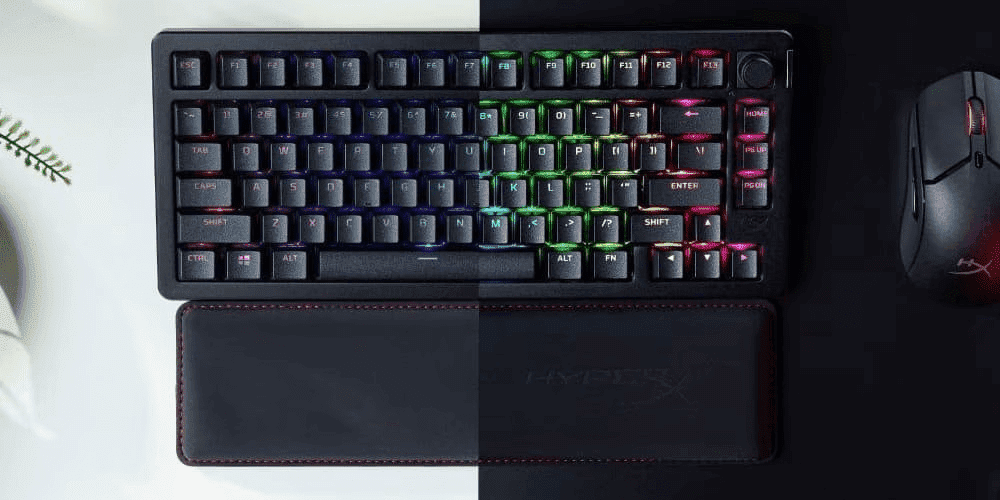Thank you for visiting the AUSTRALIA HP Store
-
Contact Us
CONTACT USCall us
- Sales
- 1300 540 516
- Technical support
- 13 23 47
Exc. public holidays
Chat with us- Our specialist are here to help
- Live Product Demo
- Sales
- 61288061500 (WhatsApp)
-

- Post Sales
- 61288061700(WhatsApp)
Exc. public holidays
Live product demo
Submit feedback We value your opinion! - My Account
Anti-Aliasing Explained: Enhance Your Gaming Graphics Quality


G’day, Aussie gamers and tech enthusiasts! If you’ve ever tinkered with your computer’s graphics settings, you’ve likely come across the term “anti-aliasing.” But what exactly is it, and how can it enhance your gaming experience? This comprehensive guide will delve into anti-aliasing, exploring its various methods, benefits, and how it can significantly improve your gaming and graphical experiences.
What is Anti-Aliasing?
Anti-aliasing is a technique used in computer graphics to smooth out jagged edges in digital images, particularly in games and other 3D rendered environments. These jagged edges, often called “jaggies” or “the staircase effect,” occur when diagonal or curved lines are displayed on a pixel-based screen, impacting the overall image quality.
The primary goal of anti-aliasing is to create smoother, more realistic-looking images by blending the colours of pixels along the edges of objects. This process helps to eliminate the harsh, pixelated appearance that can occur in lower-resolution displays or when rendering complex 3D graphics.
Understanding Aliasing
To fully grasp anti-aliasing, it’s important to understand what aliasing is. In digital graphics, aliasing occurs because screens are made up of square pixels arranged in a grid. When trying to display a diagonal line or curve, the pixels can only approximate the shape, resulting in a jagged, stair-step appearance. This effect becomes more noticeable at lower resolutions or when viewing the image up close.
How Anti-Aliasing Works
Anti-aliasing works by sampling multiple points within each pixel and calculating an average colour value. This process effectively blurs the edges of objects, creating the illusion of smoother lines. There are several methods of anti-aliasing, each with its own approach to achieving this smoothing effect.
The basic principle involves taking multiple samples of the colour values around each pixel and then averaging them to determine the final colour of that pixel. This averaging process helps to soften the transition between different coloured areas, reducing the appearance of jagged edges.
Types of Anti-Aliasing
There are various anti-aliasing techniques, each with its own advantages and performance impacts. Here are some of the most common types:
-
Supersampling Anti-Aliasing (SSAA):
-
This method renders the image at a higher resolution and then downscales it to fit the display.
-
While it produces high-quality results, it’s also the most computationally intensive.
-
SSAA essentially creates a more detailed image and then compresses it, which can significantly smooth out edges.
-
-
Multisample Anti-Aliasing (MSAA):
-
MSAA samples only the edges of polygons, making it less demanding than SSAA while still providing good results.
-
It’s a popular choice for games as it offers a good balance between quality and performance.
-
MSAA works by taking multiple samples at the edges of geometry and then blending these samples.
-
-
Fast Approximate Anti-Aliasing (FXAA):
-
A post-processing technique that’s less resource-intensive but can sometimes result in a slightly blurrier image.
-
FXAA works by analysing the rendered image and smoothing out high-contrast edges.
-
It’s very fast and can be applied to any image, making it popular in games that need to maintain high frame rates.
-
-
Temporal Anti-Aliasing (TAA):
-
This method uses information from previous frames to smooth out edges, providing good results with relatively low performance impact.
-
TAA can be particularly effective at reducing shimmer in moving images.
-
However, it can sometimes introduce a slight blur to the overall image.
-
-
Morphological Anti-Aliasing (MLAA):
-
Another post-processing technique that identifies edges in the final image and smooths them out.
-
MLAA can provide good results without the performance hit of more intensive methods.
-
It works by detecting edges in the image and then applying anti-aliasing only to those areas.
-
-
Enhanced Subpixel Morphological Anti-Aliasing (SMAA):
-
An advanced version of MLAA that provides higher quality results.
-
SMAA combines elements of MLAA with additional edge detection and blending techniques.
-
It aims to provide quality similar to MSAA but with better performance.
-
Benefits of Anti-Aliasing in Gaming and Graphics
Anti-aliasing can significantly enhance your visual experience in several ways:
-
Improved visual quality:
-
By smoothing out jagged edges, anti-aliasing creates more realistic and visually appealing graphics.
-
It can make game worlds appear more cohesive and less “digital-looking.”
-
Adjusting anti-aliasing settings can further enhance visual quality by allowing users to choose the best technique for their system and preferences.
-
-
Reduced eye strain:
-
Smoother edges can make the game easier on the eyes, especially during extended gaming sessions.
-
This can be particularly noticeable in games with lots of fine details or complex environments.
-
-
Better immersion:
-
With fewer visual artifacts, you can become more immersed in the game world or 3D environment.
-
Smoother graphics can help maintain the illusion of a continuous, realistic world.
-
-
Enhanced detail perception:
-
Anti-aliasing can help reveal fine details that might otherwise be lost in a pixelated mess.
-
This is especially important in games or applications where visual fidelity is crucial.
-
-
Improved text readability:
-
Anti-aliasing can make text appear smoother and more legible, especially at smaller sizes.
-
This is beneficial not just in games, but in all applications where text is displayed.
-
Performance Considerations
While anti-aliasing can greatly improve visual quality, it often comes at the cost of performance. More advanced anti-aliasing techniques require more processing power, which can lead to lower frame rates. It’s important to find a balance between visual quality and performance that works for your system and preferences.
Factors affecting anti-aliasing performance:
-
GPU power: More powerful graphics cards can handle more intensive anti-aliasing methods with less impact on frame rates.
-
Screen resolution: Higher resolutions naturally reduce the visibility of jagged edges, potentially reducing the need for intensive anti-aliasing.
-
Game or application complexity: More complex scenes with lots of edges and details will require more processing power for anti-aliasing.
-
Chosen anti-aliasing method: Some methods, like FXAA, have minimal performance impact, while others, like SSAA, can significantly affect frame rates.
Choosing the Right Anti-Aliasing Method
Selecting the appropriate anti-aliasing method depends on several factors:
-
Hardware capabilities: Consider your GPU’s power and the performance you’re aiming for.
-
Visual preferences: Some methods may produce slight blurring or other artifacts that you may or may not find acceptable.
-
Game or application requirements: Some games may benefit more from certain anti-aliasing techniques than others.
-
Display resolution: Higher resolution displays may require less intensive anti-aliasing to achieve smooth edges.
The Future of Anti-Aliasing
As display technologies advance, the role of anti-aliasing continues to evolve:
-
Higher resolution displays: As 4K and even 8K displays become more common, the need for traditional anti-aliasing may decrease.
-
AI-enhanced techniques: Machine learning is being applied to create more efficient and effective anti-aliasing methods.
-
Integration with other technologies: Anti-aliasing is being combined with other graphics technologies like supersampling and dynamic resolution scaling for even better results.
Best Gaming Laptops for Optimal Anti-Aliasing Performance
Best High-Performance Gaming Laptop for Anti-Aliasing


The OMEN by HP 17.3 inch Gaming Laptop 17-ck2039TX is a powerhouse designed to handle the most demanding anti-aliasing techniques with ease. Its high-end specifications make it perfect for gamers who want the best visual quality without compromising on performance.
-
17.3-inch diagonal QHD display for stunning visuals
-
NVIDIA® GeForce RTX™ 4090 Laptop GPU with 16 GB GDDR6 dedicated memory
-
Intel® Core™ i9-13900HX processor for lightning-fast performance
-
32 GB memory and 2 TB SSD storage for smooth multitasking and quick load times
With its top-of-the-line GPU and large, high-resolution display, this OMEN laptop can easily handle resource-intensive anti-aliasing methods like SSAA or high-level MSAA, providing you with the smoothest, most detailed gaming experience possible.
Best Mid-Range Gaming Laptop for Anti-Aliasing


For gamers looking for a balance between performance and affordability, the HP Victus 16.1 inch Gaming Laptop 16-r0153TX offers excellent anti-aliasing capabilities at a more accessible price point.
-
16.1-inch diagonal FHD display for clear, detailed visuals
-
NVIDIA® GeForce RTX™ 4060 Laptop GPU with 8 GB GDDR6 dedicated memory
-
Intel® Core™ i7-13700HX processor for robust performance
-
32 GB memory and 1 TB SSD storage for smooth gameplay and quick loading
This Victus laptop can handle most anti-aliasing techniques effectively, including FXAA and SMAA, providing smooth edges and improved visual quality without significantly impacting frame rates. It’s an excellent choice for gamers who want great graphics without breaking the bank.
Conclusion
Anti-aliasing is a powerful tool in the world of computer graphics, especially for gamers and graphics professionals. By smoothing out jagged edges and creating more visually appealing images, it can significantly enhance your visual experience. However, it’s important to consider the performance impact and choose the right anti-aliasing method for your system and preferences.
As display technologies continue to advance, the need for traditional anti-aliasing may decrease with higher resolution screens. However, it remains an important technique for optimizing visual quality across a wide range of devices and display types. New forms of anti-aliasing, potentially enhanced by AI and machine learning, may also emerge to tackle the challenges of increasingly complex graphics.
Whether you’re a casual gamer, a graphics enthusiast, or a professional in the field of computer graphics, understanding anti-aliasing can help you make informed decisions about your graphics settings and get the most out of your visual experiences. By balancing performance with visual quality, you can create or enjoy smoother, more realistic digital imagery that pushes the boundaries of what’s possible in computer graphics.
So, Aussie gamers, it’s time to dive into your graphics settings and experiment with different anti-aliasing techniques. Whether you’re exploring the Outback in an open-world game or competing in an esports tournament, the right anti-aliasing settings can take your gaming experience to the next level. Happy gaming, mates!
- Sales
- 1300 540 516
- Technical support
- 13 23 47
Exc. public holidays
- Our specialist are here to help
- Live Product Demo
- Sales
- 61288061500 (WhatsApp)
-

- Post Sales
- 61288061700(WhatsApp)
Exc. public holidays
Live product demo








